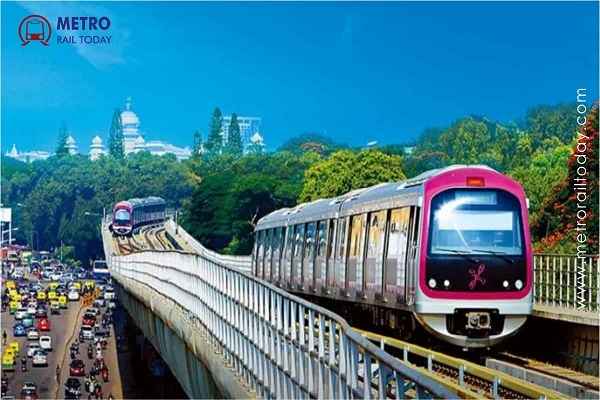 Bangalore Metro achieves record profit of ₹130 Crore in FY2023-24
Bangalore Metro achieves record profit of ₹130 Crore in FY2023-24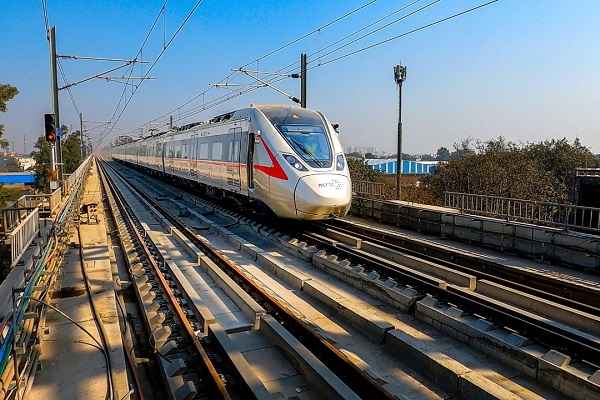 CEG Test House wins Geotechnical Investigation contract for Delhi-Dharuhera RRTS Project
CEG Test House wins Geotechnical Investigation contract for Delhi-Dharuhera RRTS Project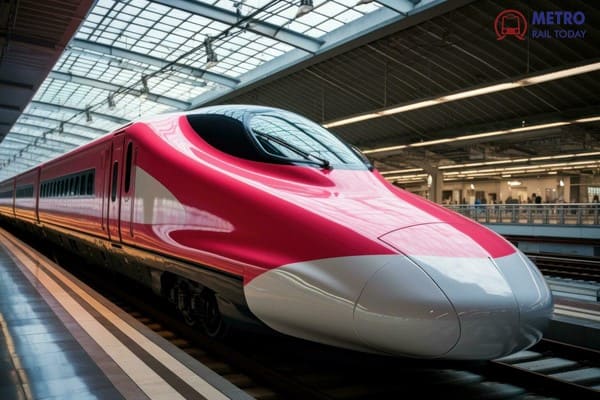 Two firms bid for ticketing system consultancy for Mumbai-Ahmedabad High Speed Rail Line
Two firms bid for ticketing system consultancy for Mumbai-Ahmedabad High Speed Rail Line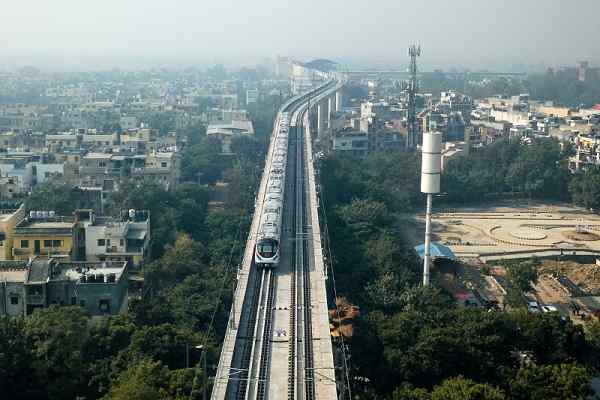 India aims to become the 2nd Largest Metro Rail Network in the World
India aims to become the 2nd Largest Metro Rail Network in the World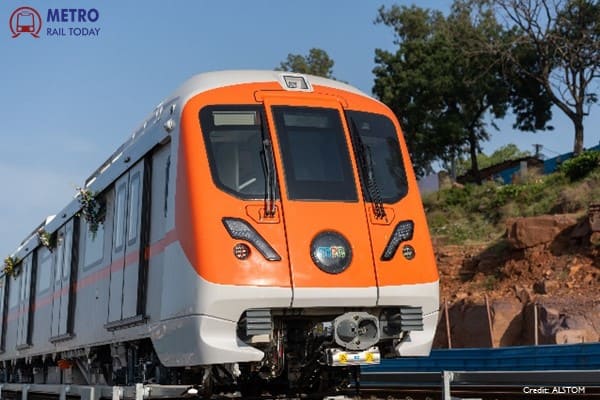 What makes the trains for Bhopal and Indore metro rail projects so special?
What makes the trains for Bhopal and Indore metro rail projects so special?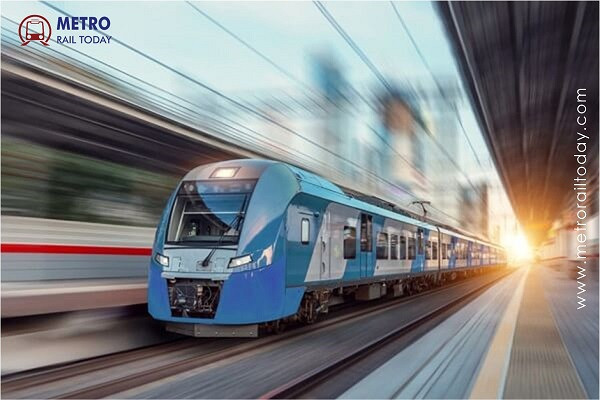 Knorr-Bremse acquires Alstom’s Rail Signalling Technology Business at €630 million
Knorr-Bremse acquires Alstom’s Rail Signalling Technology Business at €630 million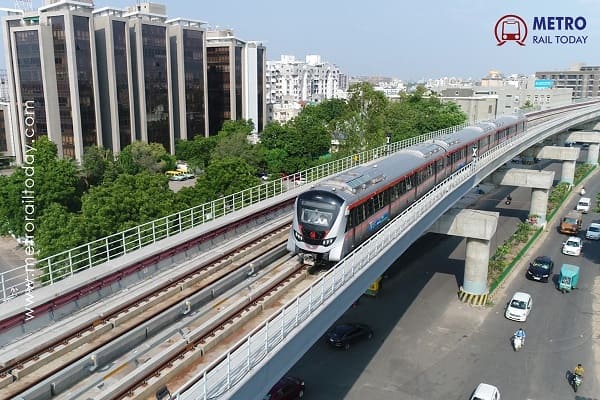 Navigating India's Metro Rail Expansion: Efficient Planning for Timely Completion
Navigating India's Metro Rail Expansion: Efficient Planning for Timely Completion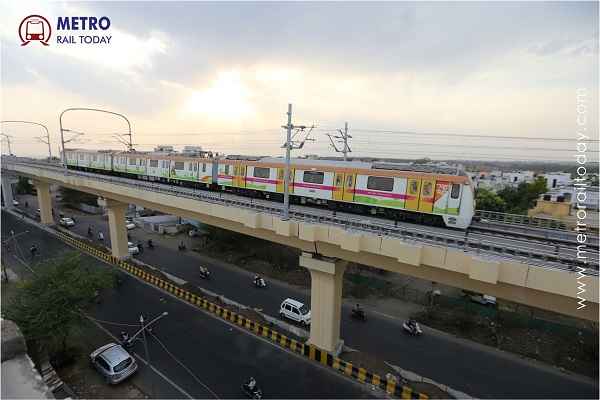 Enia Design wins Design Consultancy Contract of Nagpur Metro Phase 2
Enia Design wins Design Consultancy Contract of Nagpur Metro Phase 2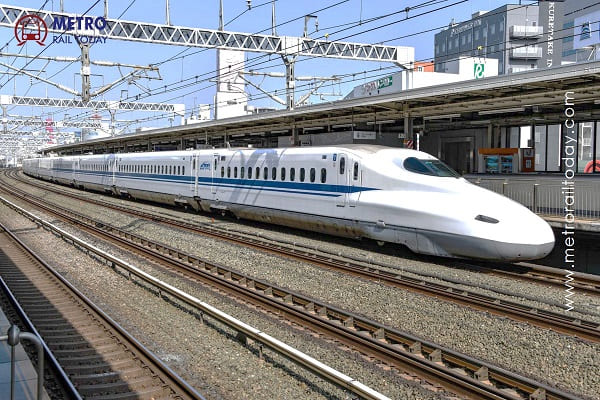 Anand Bullet Train Station is poised to become a key transportation hub on MAHSR
Anand Bullet Train Station is poised to become a key transportation hub on MAHSR Sojitz-Larsen & Toubro JV bags $290mn civil contract for Jakarta's Mass Rapid Transit
Sojitz-Larsen & Toubro JV bags $290mn civil contract for Jakarta's Mass Rapid Transit
Exclusive Interview: In conversation with H K Raghu, Executive Director, RDSO
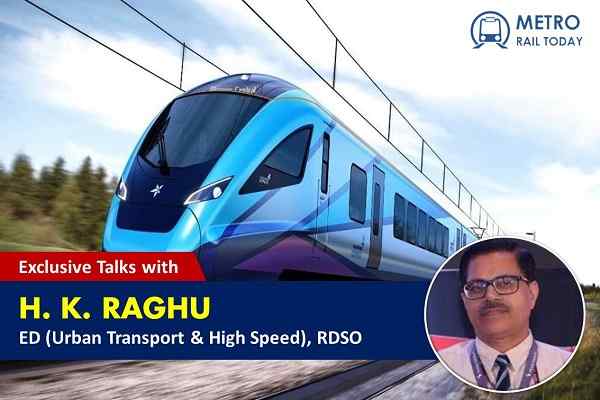
In a recent interaction with Metro Rail Today, H. K. Raghu, Executive Director (Urban Transport & High Speed) at Research Designs and Standards Organisation (RDSO) - Lucknow spoke on the role of RDSO in achieving goals of various missions initiated by Ministry of Railways and Govt. of India such as ‘Make in India’, Atmnirbhar Bharat etc.
How do you take your position and responsibility at RDSO? How has been your journey so far?
I did my graduation from “University of Roorkee” (IIT ROORKEE) in Mechanical Engineering (Honors). It is the First Engineering Institute of India started as “Thomson College of Engineering” in 1848, later became “First Engineering University on India” after independence. Thomson College of Engineering was started, with a noble cause of constructing the famous “Ganga Canal”, main canal of 272 miles and 4000 miles long distribution channels. This was to save the then “Northern Province”, now “Uttar Pradesh”, from the periodical Droughts. The Institute is also having the “History of running the first ever Steam Locomotive Hauled Train in India” on December 22, 1851, for material transportation for the construction of the Ganga Canal. The “Ganga Canal” is itself, a remarkable piece of Civil Engineering, where the canal passes over the “Sonali River” near Roorkee through an “Aqueduct (a Bridge)” of half a kilometer 25m above the Sonali River surface.
I did my “Post-graduation in Industrial Engineering (PGDIE) from “National Institute for Training in Industrial Engineering (NITIE) Mumbai”, the only Institute of its own kind in ASIA and total 6 such institutes in world , opened in collaboration with “International Labour Organization (ILO)”. NITIE is dedicated to help Indian businesses to make their presence felt globally. NITIE has decided to act as driving force not only in manufacturing sector but all dynamic sectors of the Indian economy. It has aligned its vision and activities in line with the current and future needs of the Indian economy and its vibrant and growing sectors.
After post-graduation most of my colleagues joined multinational private sectors, for plum salary packages, but I did choose to serve the Nation , so I Joined the prestigious Indian Railway Mechanical Engineering Services(IRSME), in Jan 1991. There after working on several locations and posts, starting from “Coach Maintenance Workshop Matunga Mumbai” as “Assistant Works Manager”, “Additional Divisional Railway Manager Dhanbad”, “Chief Workshop Engineer” at, “Modern Coach Factory(MCF) Raiebareli” , then “Chief Project Manager (MCF)” , before joining as “Executive Director Coordination” of “Urban Transport & High Speed at RDSO/ Lucknow”.
As “Executive Director Coordination” of “Urban Transport & High Speed Directorate” RDSO, our prime duty is to ensure, provision of safe and comfortable Urban Train Transportation System through Metro Rail Organizations. Our directorate is working as a regulatory body for all the Metro Rail Organizations, as per the Metro Act 2009. We are committed to our task of planning a safe/comfortable and affordable urban transport system for our citizens and the foreign tourists, by monitoring it from the very planning stage itself and up to its final execution and operation.
What are some recent developments at RDSO? What is the role of RDSO in the development of infrastructure related to Urban Transport System in India?
The main role of “Urban Transport and High Speed Directorate” at RDSO is to ensure that all the Metro Rails being planned in India, must be safe and comfortable, while following the international standards of safety in Metro train Operations and the Paramount Passenger- Safety and Riding-Comfort.
As already said , RDSO is the regulatory body, to ensure the Urban Transport (Mainly the Rail Transport) is planned and designed to give long lasting safe and comfortable services to our citizens. While following various directives like “Make in India” & “Atmanirbhar Bharat” to make our country self-reliant, we need to ensure that “No compromise is done in the planning as relates to the “Safety of the Structures” and the “Operations of the Trains”.
With our sustained efforts, together with Metro rail organizations, Delhi Metro and Nagpur Metro has identified 18 Sub - Systems and 17 Unit Exchange Spares costing about 18.7 lakh US$, and 34 subassemblies costing about 3.83 Lakh US$ for Indigenization and “Make in India”, without a bit of compromising on the quality of system/product and the Safety of Train Operations. “Nagpur Metro” has also identified 28 different items for indigenization costing about Rs 13.74 Crores per Trainset. First and foremost effort towards “Make in India” is done by “Pune Metro” by giving its order of manufacturing and supply of its “102 Ultra-Modern Rolling Stock”, to a newly formed Company, “TITAGARH FIREMA” through an international bid. Its various design basis documents are under the scrutiny and approval of our Directorate at RDSO.
RDSO has recently become the first Standard Developing Organization. How do you take this achievement?
History of RDSO started as early as 1903, as “Indian Railway Conference Association (IRCA)” to provide for Standardization and Coordination amongst various State Owned Railway Systems, followed by the “Central Standards Office (CSO)” established in 1930 for preparation of Designs, Standards & Specifications and then as “Railway Testing Research Centre (RTRC)” established in 1952. In 1957, the Central Standards Office and RTRC were integrated into a single unit as Research Design & Standards Organization (RDSO) at Lucknow.
Recently Government of India has notified BIS Act 2016, after which Bureau of Indian Standards (BIS) has become the nodal agency to give recognition to all the Standards making Organization in India and the recent development is nothing but giving formal recognition by BIS to RDSO as a Standard Making Organization for Railway Standards. After this all RDSO Standards will be given identification as BIS-RDSO Standards. In this regards a newly developed procedure for framing Standards by RDSO following the international guidelines , aligned with “WTO-TBT”, will come into force, giving more emphasis, on the “Active participation of all the Stake Holders”, especially the Indian Industries in framing the “Standards for Railway Products and Manufacturing Processes”.
The Central Government has recently launched Atmanirbhar Bharat initiative. What are the different things being done by RDSO in tune with this initiative? Please explain.
RDSO has got a huge Vendor Base of industry partners, who actively participating in the process of Product Development.
The First and foremost Atmanirbhar Bharat Initiative is “Vande Bharat Express- Train 18” produced and launched by Indian Railway in December 2018. This is the first Semi High speed Train of India, fully conceived and manufactured in India under the great leadership of the then GM/ICF, Shri Sudhanshu Mani, who acted is a father figure for the Team ICF for making it a reality of producing fully Indigenized “Semi High Speed Train” for India to world standards. RDSO remained closely associated from the concept design to the finally testing of prototype of this train. Maximum Design speed of this first Train-18 is 180 kmph and now specifications are being prepared for making it capable of achieving speed of 200 kmph.
The second big step is, in the field of Railway ATP (Automatic Train Protection) System. i.e. “Train Collision Avoidance System (TCAS)”. This is a notable “Make in India and Atmanirbhar Bharat” effort of RDSO.
It has been developed successfully and presently under implementation in South Central Railway. For this effort our Industry Partners are M/s HBL, M/s MEDHA and M/s KERNEX and the academia partner is IIT KGP. RDSO and IIT Kharagpur are working together for upgrading this ATP system to match the requirements of the High speed Operations also.
The third big step will be, starting of production of world class Metros Coaches, by Modern Coach Factory (MCF) Rae Bareli. The required infrastructure to produce Aluminum Coaches with latest state of art manufacturing facilities is available and manufacturing will be taken up with Transfer of Technology (TOT) with the world leading Rail Coach Manufactures, it will be a reality in near future i.e. with in a year or two.
RDSO is actively involved in all these efforts, giving its technological inputs and developing standards /specifications/process of manufacturing and its further proliferation in India, with export potential to ASIAN countries.
What do you think about the make in India initiative? What has been the journey so far of RDSO when it comes to make in India initiative?
Make in India is one of the most Important and bold initiative of Government of India , to create skills and job for our youths and providing world class products to Indian as well as International market at comparatively affordable prices.
We as a country are very rich in its natural resources, like unused Land, ample waste land, and the huge potential of renewable energy, which is required for setting up technologically advanced manufacturing industries, complying with Industry 4.0 standards. We also have a large, capable “Human Resource” to support these Industries. As regards RDSO journey, so far, it is basically little ahead of time. RDSO has already designed its Indigenized “Head Hardened Rail”, its “TCAS”, its “12000 HP Electric Locomotive”, its “Semi High Speed Coaches” and its “Passenger Traffic Locomotive” to haul the trains at 200 kmph. Though this journey is pretty long and full of challenges, but RDSO is confident to achieve the targets. For this RDSO has already entered in MOU with three international Railway Research Universities/Institutes viz: i) VNIIZHT and ii) NIIAS of Russia and KRRI/South Korea.
How does RDSO play crucial role in certification of Rails? What is the process for this?
Rail is the Road for Train operations; it becomes further more crucial when it comes to the High Speed Train Operations. RDSO has got a rich source of its “Testing Labs”, where Rails and other Track Components and full “Track Structures” are being tested and certified, including for the High Speed Train Operations. RDSO has already made its standards for “Semi High Speed Rails” and working in tandem with the “Indian Rail Manufacturing Firms” for developing the Rails for future “High Speed Train Operations”. Initial trials are very much encouraging and efforts made by industry partners are very promising.
In near future, RDSO will also have the Test Track, which is to be used not only for the testing of Track Components and the “Newly Designed Rails”, but also the “Newly Designed Locomotives” and “Newly Designed Coaches/Wagons”. Construction of this test track is already started and it is expected to be ready for testing by end of year 2022.
What are the major challenges which the second wave of Covid-19 pandemic has brought about? What has been your strategy in combatting these challenges?
Both the first and second wave of Covid -19 pandemic, imposed various restrictions on RDSO Normal Working, but while dealing the first wave itself , RDSO has reformed itself and went digital. The inspection and approval processes are made online to deal with the second wave. Though during the second wave we have lost a large number of our officials and staff, the jolt which cannot be forgotten, but then the moto was that “The Wheel Must Keep Rolling”.
During the first wave of pandemic, when most of the Metro Train operation and construction work came to almost stand still, RDSO has started the work of development of its “Online Portal” for “Safety Certification &Technical Clearance of Metro Systems” and by the time the wave was recessing, the portal was ready and made Go-live on 06.11.2020. This portal provides for “Online Submission of the Technical Documents by Metro Rails” to RDSO, its scrutiny by RDSO and Conveying the Technical Inputs to the Metro Rails which are required to modify its documents for making these fit for the Approval of the “Ministry Of Railways”. The entire process is made online and completely paperless.
RDSO has also modified its ISO Procedures to enable the various directorates to switch over to remote inspection procedures, using latest electronic gadgets and video conferencing methods to resolve the technical issues with the industry partners.
What is the role of RDSO in the upcoming metro projects, RRTS, High Speed Rail Projects and Semi High Speed Rail Projects across the country?
As per the Metro Act 2009, RDSO represents the Ministry of Railways for the statutory “Technical Approval and Safety Certification” of various Metro Rail Systems, starting from its planning stage itself to its final approval for operations ,ensuring the safety of train Running as well as the safety of passenger during travel and while waiting on stations . It is mandatory on part of Metro Rail Authority, to construct and operate its Metro Train, as per the safety advises of RDSO and take the approval of its systems from the Ministry of Railways.
As regards RRTS, which are also governed by the Metro Act, the rules are the same as stated above. For “Semi High Speed Train Operations”, the “Testing and Safety Certification” will be done by RDSO including for the “Private Operators”, who are willing to operate their own trains. “High Speed Train Operations” will also require the approval of the “Ministry of Railways” from the planning stage itself, for which international consultants and certifying bodies are deployed to act as a third party for certification and the approval of “Ministry of Railways” for its operation and maintenance.
What are the future plans of RDSO?
Future plan of RDSO is to make it, as world class “Railway Research Organization”, to deal with future challenges and shifting the existing “Preventive Maintenance Regimes” to the “Predictive Maintenance Practices”. For this plan is to shift its design from existing ones to smart ones, like “Smart Coaches”, “Smart Yards” and “Smart Signaling Systems”. The project report is submitted to the “Ministry of Railways” for consideration and approval. “The New Avatar of RDSO”, will have a collaborative approach with the “Strong Industry Partners”, “Leading Academia” and the “Leading International Railway Research Units”.
Please share a message for our readers.
From my last 30 years of experience, I can firmly say that India is having all the capabilities to achieve the “Five Trillion Economy Goal”. INDIA generates the “Excellent Engineers” and the “World Class Mangers”. Our Entrepreneurs are remarkable challenge takers. Time is now to consolidate our industries and support these, by “Reforming” our rigid framework of various rules and regulations, “Transforming” the government setup, resulting into “Performance” by providing support to our industries with a mission of “Minimum Government with Maximum Governance” in our minds.
Government of India is now taking very bold steps towards relaxing its various policies, “Make in India” and “Atmanirbhar Bharat” are the two very big initiatives in this direction. Industries have to come up to the expectations of the “NITI Aayog Policies for Industry 4.0”, so that these industries are future ready for any change in the design requirement of a product and develop capabilities for export in addition to full filling the local market requirements.




